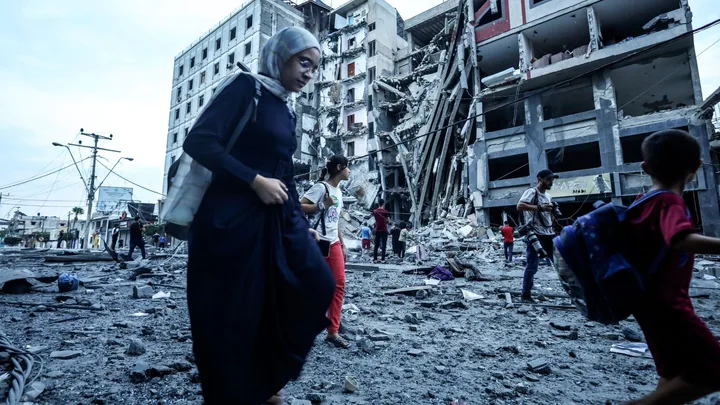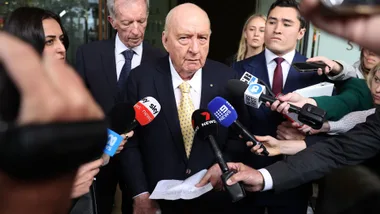On the morning of October 7, Hamas launched an attack on Israel that left hundreds of civilians dead and an estimated thousands more injured. It is the largest escalation of the Israel-Palestine conflict in decades, with Israeli Prime Minister Benjamin Netanyahu declaring war.
Israeli airstrikes launched in retaliation have reportedly left hundreds of Palestinians, including children, dead, with thousands more injured.
Prime Minister Anthony Albanese says Australia stands with Israel, condemning the “indiscriminate and abhorrent attacks by Hamas”, and recognising “Israel’s right to defend itself”.
Here’s what you need to know about the evolving situation.
What Is Hamas?
Hamas is a Palestinian militant group which claims authority over the Gaza Strip. It has been designated a terrorist group by Israel and their allies, including Australia, but has not been categorised as such by the United Nations.
Although Hamas’ founding charter called for the destruction of Israel, which it describes as “a racist, aggressive, colonial and expansionist project based on seizing the properties of others”, it has since attempted to negotiate a Palestinian territory in-line with 1967 assignations, Reuters reveals.
Israel, however, has alleged Hamas is trying to “fool the world” and such negotiations are a ruse.
Hamas and Israel have been in a constant state of deadly conflict for decades.
What Did Hamas Do On October 7, 2023?
At roughly 6:30am local time on the morning of Saturday, October 7, Hamas launched a surprise attack on parts of southern Israel.
‘Operation Al-Aqsa Flood’ began with a barrage of rocket fire on several southern Israeli cities, with Hamas claiming it launched 5,000 rockets and Israel’s military estimating half this figure.
The attack was followed by an invasion, with Hamas military allegedly breaching security barriers and fences between Gaza and Israel, as others entered via boats and at least one via parachute, Al Jazeera reports. Associated Press reports as many as 1,000 Hamas fighters were involved in these raids.
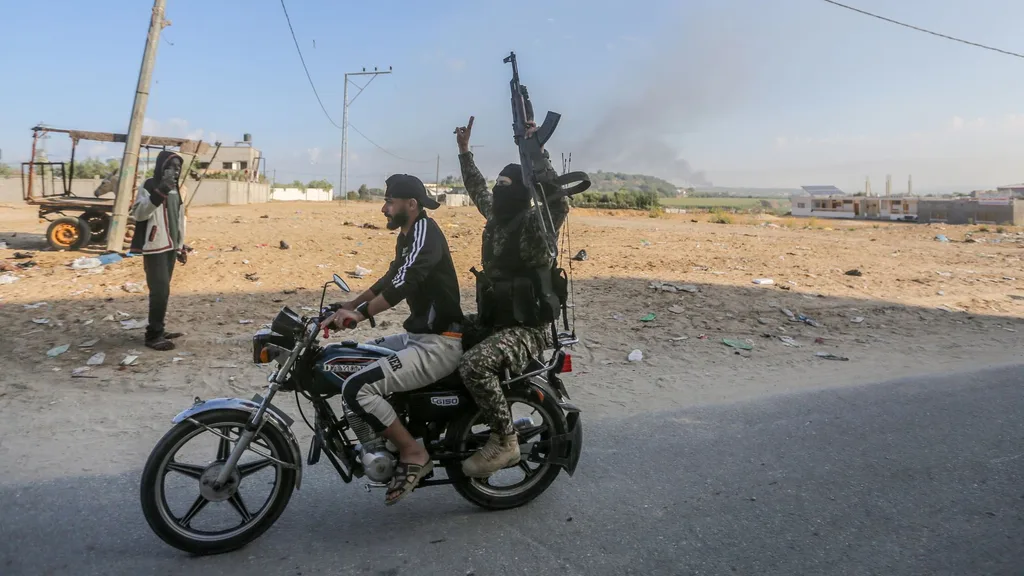
Hamas militants stormed at least three Israeli military facilities plus several civilian areas, including a music festival in the desert where at least 260 bodies have since been recovered by a rescue service. Reports state Hamas entered the Nova Festival near the Re’im kibbutz and “sprayed bullets” into the crowd. Videos have emerged on social media of people running through fields or being escorted away as captives.
Hamas has since confirmed it has a number of hostages in Gaza, including senior officers from the Israeli Defence Force (IDF), with Israeli authorities confirming the number of captives was “significant”.
Neither Israel nor Hamas has confirmed a number, though The Guardian reports a current estimate of 100.
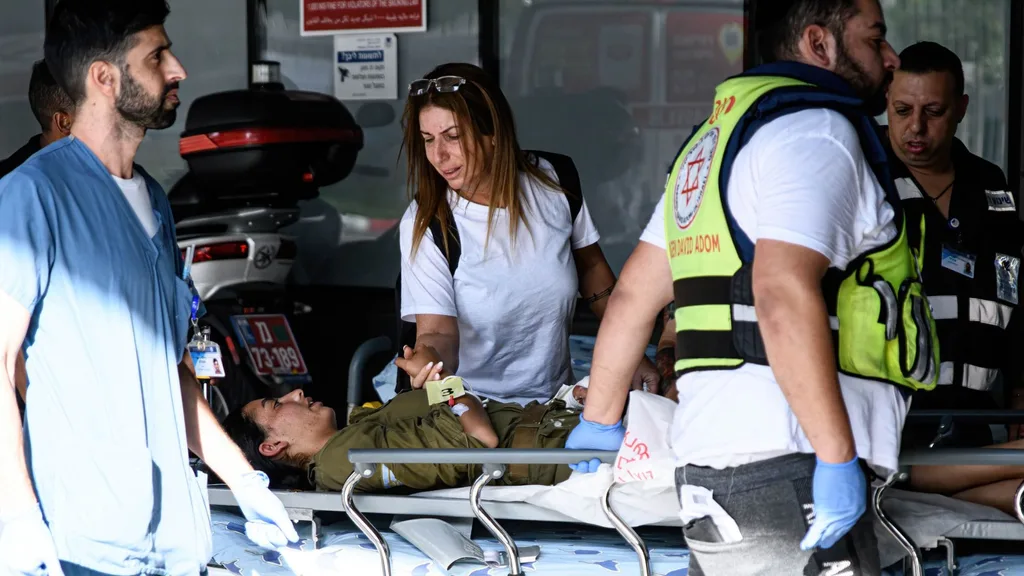
By Saturday night, it was reported there were up to 300 Hamas militants still fighting in Israel, per estimates from the IDF. The Guardian reports there were eight points where fighting remained active, including in the Israeli cities of Zikim, Be’eri, Re’im, Sufa, Kfar Aza, Yakhini and Sderot.
The October 7 assault occurred during the Jewish holiday of Simchat Torah.
As to why Hamas launched this attack, Hamas’ military leader Mohammed Deif claimed it was a response to the 16-year blockade of Gaza, which has suffered from import sanctions and restricts people from leaving the area. Over two million people live in Gaza, and more live in the West Bank territory.
How Did Israel Respond?
On the day of the invasion, Israel responded swiftly with air strikes on Gaza occurring from around 9:45am.
Key buildings in Gaza city were targeted, including Palestine Tower, which is home to Hamas radio stations. The Israeli Defence Force (IDF) claims to have destroyed 800 targets. This includes civilian areas and a refugee camp.
Israel has suspended fuel and electricity to Gaza, restricting the medical services in the area.
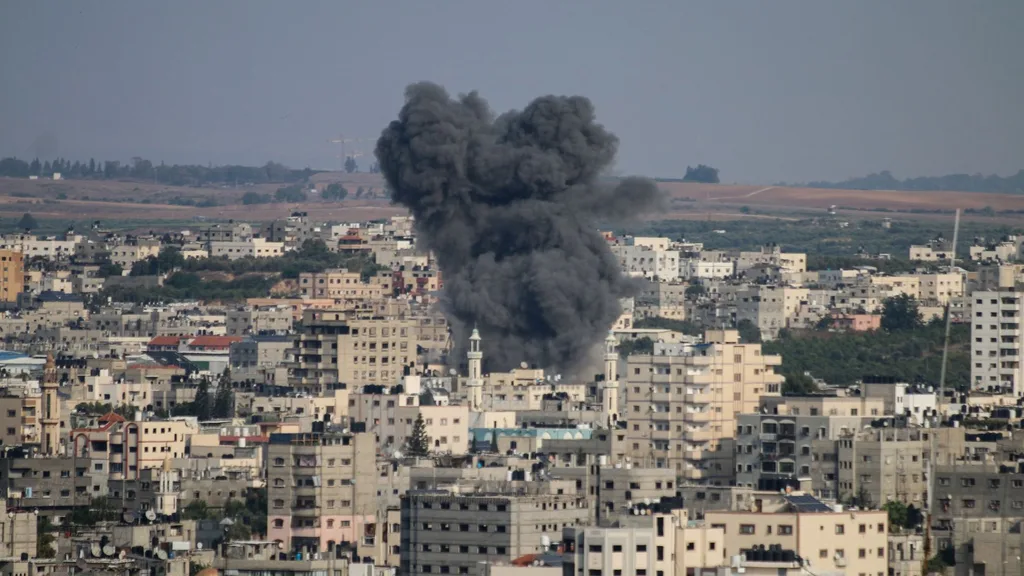
Despite Israel encouraging Palestinian residents to flee their homes in certain cities, there is currently nowhere for them to go. Associated Press reports hundreds of thousands of Palestinians have sheltered in 44 UN-run schools in the region.
Meanwhile, the IDF also deployed forces to subdue the invading Hamas militants in Israeli cities where fighting is ongoing.
Did Israel Declare War On Palestine?
In a filmed statement, Israeli Prime Minister Benjamin Netanyahu said Israel is “at war”.
“Citizens of Israel, we are at war. Not an operation or in rounds of fighting, but at war!” he said according to CNN, as translated from Hebrew.
“This morning, Hamas launched a murderous surprise attack against the State of Israel and its citizens. We have been in this since the early morning hours. We have been in this since the early morning hours. I convened the heads of the security establishment and ordered – first of all – to clear out the communities that have been infiltrated by terrorists. This is currently being carried out.”
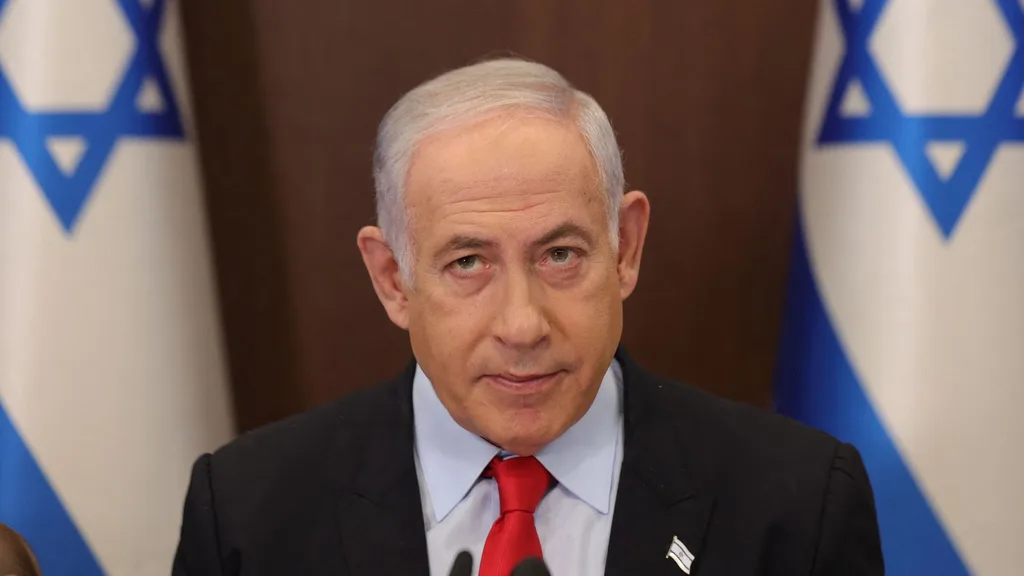
In response to the Hamas invasion, Prime Minister Netanyahu said “the enemy” would “pay an unprecedented price”.
“At the same time, I have ordered an extensive mobilisation of reserves and that we return fire of a magnitude that the enemy has not known. The enemy will pay an unprecedented price.
“In the meantime, I call on the citizens of Israel to strictly adhere to the directives of the IDF and Home Front Command. We are at war and we will win it.”
The ministry of foreign affairs for the state of Palestine has since issued a response calling on the international community to “immediately intervene and provide international protection to the Palestinian people and end Israel’s barbarous campaign of death and destruction.”
“The Palestinian people will continue to defend themselves, their homes, and their fundamental right to live in freedom and dignity, free from occupation, apartheid, and persecution,” the statement concluded.
What Is The Current Death Toll?
Figures are still rolling in with numbers sure to rise as conflict continues.
As of October 9, The Guardian reports at least 700 Iraelis were killed in the Hamas attacks by Sunday night.
The IDF reports 400 Palestinian militants were killed in Gaza and southern Israel, while the Palestinian health ministry said 400 Palestinians had been killed, including 20 children.
Meanwhile, Al Jazeera reports at least 12 people have been killed in the West Bank, including one child.
There are at least 2,000 nationals from each of the respective states wounded.
It is largely not clear how many military personnel and how many civilians have been killed.
How Is Australia Responding To The Conflict?
Australia has condemned the attacks from Hamas, with Prime Minister Anthony Albanese saying the “unprovoked” attack on Israel was about “creating terror”.
Following news of the attack on October 7, the PM’s office tweeted: “Australia stands with our friend Israel in this time. We condemn the indiscriminate and abhorrent attacks by Hamas on Israel, its cities and civilians. We recognise Israel’s right to defend itself.”

Meanwhile, Foreign Minister Penny Wong also expressed solidarity with Israel, but has encouraged “restraint” in its response in Gaza.
“[Israel] has to make its decisions about how it’s best to defend itself in a circumstance in which it has been attacked … its citizens targeted, taken … but we will always urge all parties to protect civilian lives,” Minister Wong said, according to The Guardian.
There are currently no updates regarding any Australians travelling in the region.
However, Australia has changed its travel advice for the region, saying do not travel to Gaza or areas near its border. It instructs those travelling to the rest of Israel and Palestinian territories to ‘Exercise a high degree of caution’.
